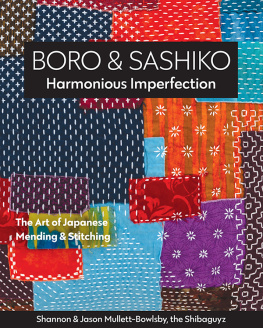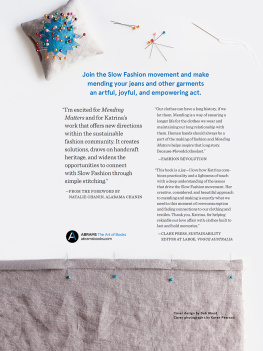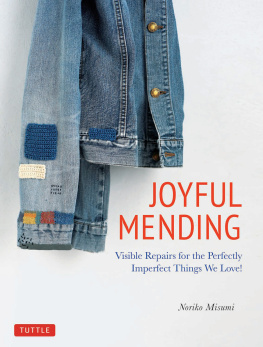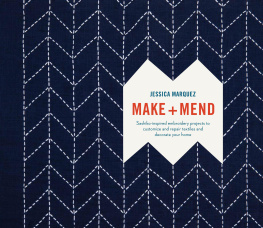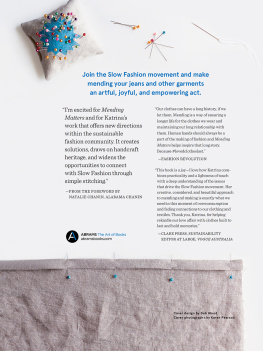



What does it mean to mend? For most people it means to repair, patch or rebuild its about making something whole again. And its also about the activity and utility of mending, through intention and necessity, to make something useful again. One thing is for sure, though: it is not about replacing something old with something new.
Mending textiles and clothing has always been an important part of past practises. We mended because we had to; it was a natural part of the useful life of things. As fabric became worn, mending was the next step in extending its life: creation, use, mending and reuse. Every culture that has a history of textiles also has a history of mending, and each with its own approach. Often reflective of social context, techniques evolved to make the need for mending as acceptable as possible from the overtly decorative to the virtually invisible. From the traditions of boro, sashiko or kantha to different types of darning, weaving and patching, mending fulfilled our needs but also offered a sense of beauty and of understanding for textiles and clothes and how we use them. Mending is a part of all places and all families.
In more recent years our relationship with mending has changed and for many consumers it plays a much smaller role in our lives and in quite a few cases no role at all. Affluence and the textile industry as a whole have made it unnecessary and, in fact, have fostered a relationship with fabric where replacing worn items became the norm. And yet, for contemporary makers, mending techniques continue to have a place in our studio practises.
I have always loved patchwork, assemblage and collage. They can be evocative of so many things the quality of torn edges, the honesty of fabrication or the beauty of worn or incomplete things. Whether repairing something old, or using old fabric to create something new, mending returns a value to something. Its an opportunity to decorate, express identity and celebrate connections. Its an extension of making, but also an opportunity for expression.
Ive divided this book into two main areas: a tools and techniques section, followed by the projects. The mending techniques and stitches that I use are hand-sewing techniques, which you can apply in a variety of situations and each is given their own individual focus in the techniques section, so you can learn the basics and a little history.
Although the techniques form the foundations with which we will work, I should talk a bit about how they relate to the projects that Ive chosen. Because mending is such a broad subject, I wanted the projects to reflect this by offering a range of creative possibilities that use the techniques in different ways and for different purposes. So Ive also organized the projects into three categories: repair, renew and reuse.
Repair is the closest to traditional mending, using a variety of techniques such as sashiko, patching or darning. These projects are exactly as they sound repairing old and worn items in creative ways that extend their lives and allow the mending to express something about each item.
Renew is when you have a piece of clothing that is otherwise fine, but just seems tired and needs a little something. Here we will use some of our favourite techniques, such as stitching, dyeing, surface design or appliqu, to decorate and revive these pieces and bring them back to life.
Reuse is how I describe the making of something altogether new using old fabric and remnants, old items reinterpreted in new ways, or using traditional mending techniques in new situations.
In all the projects I describe the techniques and materials that Ive chosen and give you step-by-step instructions to show how I worked. While working you can also refer back to the techniques section for specific details about individual techniques or stitches.
For some projects you will be able to make something quite like my example; in others my examples are in many ways merely suggestions, which you can apply or adapt to suit one of your garments. Feel free to take your own course, choosing the techniques or stitches that you feel work. Remember: mending is about bringing your items back to life, reinterpreting them and above all not wasting, so using what you have on hand is key. So dont worry if your material or colour choices differ from mine. In the end I hope that each project or technique will give you a skill set, and inspiration to carry on with your own projects and designs.

I can think of lots of reasons why I mend, but there are a couple that stand out. To start with, mending and mending techniques are activities that Ive always done. Theyre at the heart of any creative studio, making things by hand with fabric and thread, finding a vision. Even before I had a studio, when I was a child, my mother made our clothes out of necessity. Not all of them, but a lot. So working with bits of borrowed fabric was a part of my earliest experiences, and working with material, paper and thread followed me through several art schools and remains with me today. Whether Im reworking old clothes or incorporating old techniques to make my products, mending has an ethos that Im sure all makers understand. Its a part of working and thinking with your hands cutting and sewing layers and layers, and stitch by stitch holding it all together.
Of all the things I do in the studio, patchwork is one of my favourites. I love the process and I love the aesthetic of combining patterns and drawings into some sort of whole its endlessly creative. Its also something that comes easily to me, because I have lots of fabric around. Why? Because I never waste fabric that can be used for something, so I try always to save my scraps and remnants.
Ive always believed in an economy of means in art practice, where everything is just what it needs to be, nothing more, nothing less, and nothing wasted. And avoiding waste is a concept that is central to mending.
Which leads us to another thought. The truth is that most people have very little creative connection to the clothing they wear. The textile industry taught us not to. Weve grown accustomed to the endless cycle of consumption, with seasonal offerings made in other places with faceless labour. We regard items as virtually disposable pieces to be used or worn and then discarded. The out-of-pocket prices are low, but there is always a larger price to be paid.
The textile and clothing industry as a whole plays a significant part in the global economy. As concerns over climate change are inescapable, its time to realize that over-consumption, overproduction and waste in the textile industry are major contributors to the carbon emissions connected to climate change. Agriculture, manufacturing, chemical production, transportation around the world there are energy needs with every step, leading to an enormous environmental impact. The bottom line is that fast fashion has left us with a very different world. While we long for endless creativity, were left with endless disposability with almost nothing recyclable.
Next page
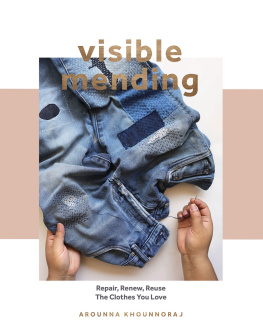
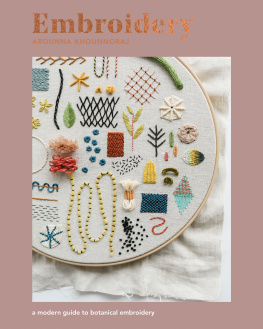


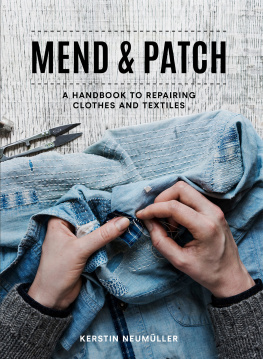
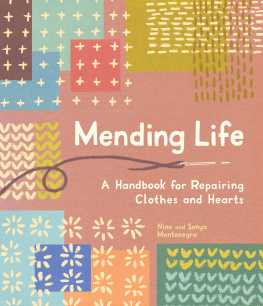
![Noriko Misumi [ミスミノリコ] - Mending with Love: Creative Repairs for Your Favorite Things](/uploads/posts/book/306555/thumbs/noriko-misumi-mending-with.jpg)
